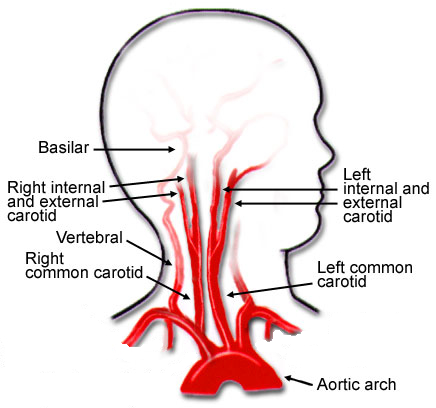This post will kick off a series of posts on BCVI. What is that, you ask? There seems to be some confusion as to what the acronym BCVI actually stands for. Some people believe that it means blunt cerebrovascular injury. This is not correct, because that term refers to injury to just about any vessel inside the skull.
The correct interpretation is blunt carotid and vertebral artery injury. This term refers to any portion and any combination of injury to those two pairs of vessels, from where they arise on the great vessels, all the way up into the base of the skull. Here’s a nice diagram:

Note that we will be excluding the external carotid arteries from this discussion, since injuries to them do not have any impact on the brain. They can cause troublesome bleeding, though.
These arteries are relatively protected from harm during blunt trauma. But given enough energy, bad things can happen. Fortunately, injuries to these structures are not very common, but unfortunately many trauma professionals under-appreciate their frequency and severity.
Over the next four posts, I’m going to provide an update on what we know about BCVI. I will try to tease out the true incidence, review the (multiple) screening systems, and discuss various ways to manage these injuries.
In the next post, we’ll explore the incidence of this injury. Is it truly as uncommon as we think?

